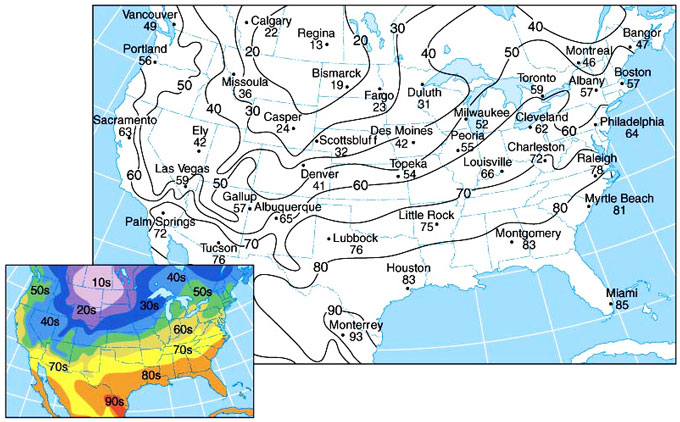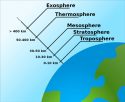 The temperature of a region is usually taken as a whole to find out how that area feels, e.g. hot or cold. However, the temperature in a region is not the same in every location of its covered area. It changes from point to point in a particular region. Generally, to get accurate temperature information throughout a large region, isotherms are used to show points and areas of similar temperature in any particular region.
The temperature of a region is usually taken as a whole to find out how that area feels, e.g. hot or cold. However, the temperature in a region is not the same in every location of its covered area. It changes from point to point in a particular region. Generally, to get accurate temperature information throughout a large region, isotherms are used to show points and areas of similar temperature in any particular region.
What Are Isotherms
Isotherms are the lines of the same temperature that are drawn on the map of a region to show its temperature distribution. These lines are drawn by connecting the points of the same temperature in a region. In general, isotherms with a difference of at least 5 degrees are drawn to avoid cluttering of the map.
How Isotherm Are Drawn?
The temperature data for drawing the isotherms are collected from various weather stations in a region. After then, isotherms are drawn by estimating positions of the points having the same temperature. It is not always necessary that isotherms directly pass through the weather stations that recorded the temperature. Because weather stations often give different temperature readings based on their location. Moreover, isotherms are estimated lines from the data of weather stations of that region.
Uses Of Isotherms
Isotherms are very helpful tools that make it easier to visualize the temperature distribution in a particular region. For example, if you want to plan a picnic and if you observe the isotherms of those regions, you will find areas with high and low temperatures. So, it will easier for you to pick the correct spot with a favorable temperature for your stay.
Furthermore, isotherms also help to visualize how much temperature changes per unit distance (e.g. mile or kilometre) and in which direction. If isotherms are very close to each other on the map than it means temperature changes rapidly in small distances. On the other hand, if isotherms are widely spaced than it means temperatures don’t change rapidly over small distances.
Facts
- The word isotherm is composed of ‘iso’ means same, and ‘therm’ means temperature. So these are the lines of the same temperature.
- The area between the two isotherms has the temperature that varies from one isotherm towards the other.
- The area between 60 °F and 70 °F isotherms will be called as the 60s.





